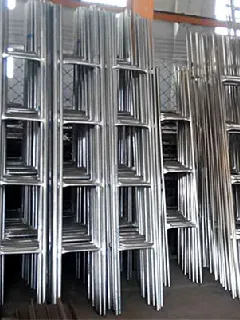loading...
- No. 9, Xingyuan South Street, Dongwaihuan Road, Zaoqiang County, Hengshui, Hebei, China
- admin@zjcomposites.com
- +86 15097380338
- Welcome to visit our website!
Exploring the Benefits and Applications of Glass Fiber Reinforced Polymer Rebar in Construction
Glass Fiber Reinforced Polymer (GFRP) Rebar A Modern Solution for Reinforced Concrete Structures
In the construction industry, the development of innovative materials is essential for enhancing durability, sustainability, and performance. One such advancement is the incorporation of Glass Fiber Reinforced Polymer (GFRP) rebar into reinforced concrete structures. GFRP rebar, composed of a polymer matrix reinforced with glass fibers, presents a promising alternative to traditional steel rebar, offering numerous advantages that address challenges faced in modern engineering.
GFRP rebar is becoming increasingly popular due to its remarkable properties. One of its most significant advantages is its resistance to corrosion. Unlike steel, which is prone to rust and degradation when exposed to moisture and various environmental conditions, GFRP does not corrode or degrade over time. This characteristic makes GFRP particularly advantageous in environments that are harsh or chemically aggressive, such as marine structures, bridges, and wastewater treatment facilities. The longevity of GFRP rebar leads to reduced maintenance costs and extended service life for concrete structures, making it a cost-effective solution in the long run.
Glass Fiber Reinforced Polymer (GFRP) Rebar A Modern Solution for Reinforced Concrete Structures
In terms of tensile strength, GFRP rebar performs exceptionally well. While it does not have the compressive strength that steel possesses, its tensile strength is superior to that of regular concrete, making it an effective choice as a reinforcement material. GFRP’s high tensile strength allows for thinner slabs and reduced overall concrete volume needed for construction, contributing to a more material-efficient design.
glass fiber reinforced polymer gfrp rebar

Additionally, GFRP rebar is non-magnetic and non-conductive, which makes it an excellent choice for projects requiring electromagnetic neutrality, such as in certain high-tech and sensitive environments. Its non-conductive properties can prevent issues related to electrical interference, which is particularly beneficial for telecommunications infrastructure and laboratories.
Despite its many advantages, GFRP rebar also has certain limitations that need to be considered. One of the primary concerns is its cost; GFRP is typically more expensive than steel rebar. However, the upfront investment can often be justified by the long-term savings associated with its durability and decreased maintenance requirements. Furthermore, as production technologies evolve and demand increases, the costs of GFRP are expected to decrease, making it a more feasible option for broader applications.
The adoption of GFRP rebar is also supported by various research studies and practical applications. Numerous projects worldwide have demonstrated the effective use of GFRP in various applications, from bridge construction to residential buildings. This growing body of evidence continues to foster a greater acceptance of GFRP materials in the industry.
In conclusion, Glass Fiber Reinforced Polymer rebar represents a significant advancement in construction materials, offering a host of benefits that address contemporary challenges in civil engineering. With its corrosion resistance, lightweight nature, high tensile strength, and non-magnetic properties, GFRP rebar is poised to revolutionize the future of reinforced concrete structures. As technology continues to evolve and production costs decrease, GFRP's role in construction will likely expand, making it an integral component of sustainable building practices.
-
Premium FRP Handrail for All ApplicationsNewsAug.29,2025
-
Low Maintenance FRP Mini Mesh Grating ProductsNewsAug.29,2025
-
Innovative FRP Square Tubes for Modern Industrial SolutionsNewsAug.29,2025
-
FRP Water Storage Tanks Wholesale Solutions for Bulk BuyersNewsAug.29,2025
-
FRP Molded Grating Solutions for Diverse Industrial ApplicationsNewsAug.29,2025
-
Construction Advancements Through FRP Pultruded ProfilesNewsAug.29,2025
-
Why Choose FRP Railings, Guardrails, and Handrail Systems?NewsAug.29,2025
